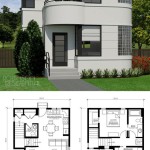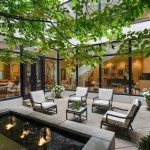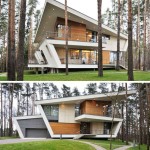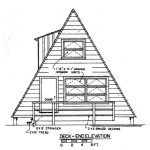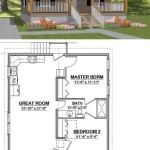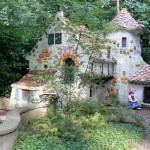Hill Country house plans are architectural blueprints designed to guide the construction of homes in the unique setting of the Texas Hill Country. These plans often incorporate features that take advantage of the rolling hills, scenic views, and natural beauty of the region.
When envisioning a Hill Country house, one may think of sprawling single-story homes with wide porches that offer panoramic vistas of the surrounding landscape. These plans typically emphasize indoor-outdoor living spaces, allowing homeowners to seamlessly transition from their living areas to outdoor patios and decks that showcase the region’s stunning scenery.
In the following sections, we will delve deeper into the key characteristics, advantages, and considerations associated with Hill Country house plans, providing aspiring homeowners with a comprehensive guide to designing and building their dream home in this picturesque setting.
Hill Country house plans offer a unique blend of style, functionality, and connection to the natural beauty of the Texas Hill Country. Here are 10 important points to consider when designing your Hill Country dream home:
- Expansive views
- Indoor-outdoor living
- Hillside construction
- Energy efficiency
- Local materials
- Water conservation
- Native landscaping
- Customizable designs
- Outdoor kitchens
- Fireplaces and fire pits
By incorporating these elements into your Hill Country house plan, you can create a home that truly embraces the region’s unique character and provides a comfortable, stylish, and sustainable living environment.
Expansive Views:
Hill Country house plans often prioritize expansive views, capitalizing on the region’s rolling hills and breathtaking scenery. Large windows, floor-to-ceiling glass doors, and elevated decks and patios are common features that allow homeowners to maximize their connection to the outdoors and enjoy panoramic vistas from multiple vantage points within their home.
Expansive views not only enhance the aesthetic appeal of a Hill Country home but also provide numerous benefits for its occupants. Natural light floods into the living spaces, creating a bright and airy atmosphere. The connection to the outdoors promotes a sense of well-being and reduces stress levels. Moreover, expansive views can increase the perceived size of a home, making it feel more spacious and inviting.
To fully embrace the expansive views offered by the Hill Country terrain, consider incorporating large windows and glass doors along the side of your home that faces the most desirable views. Additionally, multi-level decks and patios allow you to enjoy the scenery from different perspectives and create seamless transitions between indoor and outdoor living spaces.
When planning for expansive views, remember to consider the position of your home on the lot and the surrounding landscape. Proper orientation can optimize the views while minimizing the impact of neighboring structures or vegetation. By carefully considering these factors, you can create a Hill Country home that truly captures the beauty of its surroundings.
Indoor-outdoor living
Hill Country house plans often emphasize indoor-outdoor living, blurring the boundaries between the interior and exterior spaces of the home. This design philosophy embraces the region’s mild climate and stunning natural beauty, allowing homeowners to seamlessly transition between their living areas and the outdoors.
- Expansive decks and patios: Hill Country homes typically feature expansive decks and patios that extend the living space outdoors. These outdoor areas provide ample space for dining, entertaining, and relaxing while enjoying the scenic views.
- Large windows and glass doors: Large windows and glass doors connect the indoor and outdoor spaces, creating a sense of openness and bringing the outdoors in. These expansive openings allow for natural light to flood the home and provide unobstructed views of the surrounding landscape.
- Outdoor kitchens and fireplaces: Outdoor kitchens and fireplaces are popular features in Hill Country homes, allowing homeowners to enjoy cooking and entertaining outdoors. These amenities extend the functionality of the home and create additional gathering spaces for family and friends.
- Courtyards and screened porches: Courtyards and screened porches offer a more intimate outdoor living experience. Courtyards provide private outdoor spaces that are protected from the elements, while screened porches allow for bug-free enjoyment of the outdoors.
By incorporating indoor-outdoor living elements into your Hill Country house plan, you can create a home that takes full advantage of the region’s natural beauty and provides a comfortable and inviting living environment.
Hillside construction
Hillside construction is a specialized type of home building that involves constructing a house on a sloping lot. Hill Country house plans often incorporate hillside construction techniques to take advantage of the region’s unique topography and create homes that are both visually appealing and functional.
Building a home on a hillside offers several advantages. First, it can provide stunning views of the surrounding landscape. Elevated homes capture panoramic vistas that would not be possible on flat land. Second, hillside construction can help to reduce erosion and protect the natural environment. By carefully grading the land and using proper drainage systems, builders can minimize the impact of construction on the hillside.
However, hillside construction also presents some challenges. One challenge is the need for specialized construction techniques to ensure the stability of the home on the sloping lot. This may involve using retaining walls, pilings, or other structural supports to prevent the home from sliding or collapsing. Another challenge is the need to carefully plan for drainage to prevent water damage to the home. Proper grading and the installation of gutters and downspouts are essential to direct water away from the foundation.
Despite the challenges, hillside construction can be a rewarding way to build a home in the Hill Country. By working with an experienced builder who is familiar with hillside construction techniques, you can create a beautiful and functional home that takes full advantage of the region’s unique topography.
Here are some additional considerations for hillside construction:
- Site assessment: Before beginning construction, a thorough site assessment should be conducted to evaluate the slope of the land, soil conditions, and potential drainage issues.
- Foundation design: The foundation of a hillside home must be carefully designed to ensure stability. This may involve using specialized foundation systems such as piers, pilings, or caissons.
- Retaining walls: Retaining walls may be necessary to stabilize the hillside and prevent erosion. These walls can be made from a variety of materials, including concrete, stone, or wood.
- Drainage: Proper drainage is essential to prevent water damage to a hillside home. This involves grading the land to direct water away from the foundation and installing gutters and downspouts.
- Landscaping: Landscaping can help to stabilize the hillside and prevent erosion. Native plants and groundcovers are good choices for hillside landscaping, as they are adapted to the local climate and soil conditions.
Energy efficiency
Energy efficiency is an important consideration for Hill Country house plans, given the region’s hot and humid climate. By incorporating energy-efficient features into your home’s design, you can reduce your energy consumption and save money on your utility bills.
- Insulation: Proper insulation is essential for energy efficiency. It helps to keep your home cool in the summer and warm in the winter by preventing heat transfer. Hill Country homes should have a high level of insulation in the attic, walls, and floors.
- Windows and doors: Windows and doors are another important area for energy efficiency. Look for windows and doors that are Energy Star certified. These products meet strict energy efficiency standards and can help to reduce heat transfer.
- Appliances: Energy-efficient appliances can also help to reduce your energy consumption. When purchasing new appliances, look for models that have the Energy Star label. These appliances meet strict energy efficiency standards and can save you money on your energy bills.
- Lighting: Lighting is another area where you can improve energy efficiency. Use LED or CFL bulbs instead of traditional incandescent bulbs. LED and CFL bulbs use less energy and last longer than incandescent bulbs.
By incorporating these energy-efficient features into your Hill Country house plan, you can create a home that is comfortable and affordable to maintain.
Local materials
Incorporating local materials into your Hill Country house plan can help to reduce the environmental impact of your home and create a more authentic sense of place. Local materials are sourced from within the region, which reduces the transportation distance and associated emissions. Additionally, local materials are often well-suited to the local climate and conditions, which can improve the durability and performance of your home.
- Limestone: Limestone is a sedimentary rock that is found in abundance in the Texas Hill Country. It is a durable and versatile material that can be used for a variety of purposes, including building foundations, exterior walls, and fireplaces.
- Wood: The Texas Hill Country is home to a variety of tree species, including oak, cedar, and cypress. These woods can be used for framing, siding, and trim. Using local wood can help to reduce the environmental impact of your home and create a more natural aesthetic.
- Stone: In addition to limestone, there are a variety of other types of stone that can be found in the Texas Hill Country. These stones can be used for a variety of purposes, including building walls, patios, and walkways.
- Recycled materials: Using recycled materials in your Hill Country house plan can help to reduce waste and create a more sustainable home. Recycled materials can be used for a variety of purposes, including insulation, flooring, and countertops.
By incorporating local materials into your Hill Country house plan, you can create a home that is both beautiful and sustainable.
Water conservation
Water conservation is an important consideration for Hill Country house plans, given the region’s semi-arid climate. By incorporating water-saving features into your home’s design, you can reduce your water consumption and protect this precious resource.
One way to conserve water is to install low-flow fixtures throughout your home. Low-flow toilets, showerheads, and faucets can reduce water consumption by up to 50%. Another way to conserve water is to use native plants in your landscaping. Native plants are adapted to the local climate and require less water than non-native plants.
In addition, you can install a rainwater harvesting system to collect and store rainwater for use in irrigation or other non-potable purposes. Rainwater harvesting systems can be simple or complex, depending on your needs and budget. A simple system might involve collecting rainwater from your roof in a rain barrel. A more complex system might involve storing rainwater in an underground cistern.
Finally, you can reduce your water consumption by simply being more mindful of your water use. For example, you can take shorter showers, fix leaky faucets, and water your lawn less frequently. By taking these simple steps, you can make a significant contribution to water conservation in the Hill Country.
Here are some additional tips for water conservation in Hill Country house plans:
- Install a dual-flush toilet. Dual-flush toilets offer two flush options: a full flush for solid waste and a half flush for liquid waste. This can help to reduce water consumption by up to 25%.
- Use a low-flow showerhead. Low-flow showerheads can reduce water consumption by up to 50%. Look for showerheads that are certified by the EPA’s WaterSense program.
- Install a faucet aerator. Faucet aerators mix air into the water stream, which can reduce water consumption by up to 30%. Aerators are inexpensive and easy to install.
- Water your lawn less frequently. The Texas Hill Country is a semi-arid climate, so it is important to water your lawn less frequently. Water your lawn only when it needs it, and water it deeply to encourage deep root growth.
- Use native plants in your landscaping. Native plants are adapted to the local climate and require less water than non-native plants. When choosing plants for your landscape, look for plants that are drought-tolerant and low-maintenance.
Native landscaping
Native landscaping is an important consideration for Hill Country house plans, given the region’s unique climate and ecology. Native plants are adapted to the local climate and soil conditions, which means they require less water, fertilizer, and pesticides than non-native plants. In addition, native plants provide food and shelter for local wildlife, which can help to create a more balanced and sustainable ecosystem.
There are many benefits to using native plants in your Hill Country landscape. Native plants are more likely to thrive in the local climate, which means they will require less maintenance and care. They are also more resistant to pests and diseases, which can save you money on pesticides and herbicides.
In addition, native plants provide a number of environmental benefits. They help to reduce erosion, improve water quality, and provide food and shelter for local wildlife. Native plants can also help to reduce the number of invasive plants in your landscape, which can help to protect the local ecosystem.
When choosing native plants for your Hill Country landscape, it is important to consider the specific needs of your site. Some factors to consider include the amount of sunlight, the type of soil, and the amount of water available. You should also choose plants that are appropriate for the size and style of your home.
Benefits of Native Landscaping:
- Reduced water consumption
- Reduced fertilizer and pesticide use
- Increased wildlife habitat
- Improved water quality
- Reduced erosion
- Protection of local ecosystems
Tips for Native Landscaping:
- Choose plants that are native to your specific area.
- Consider the amount of sunlight, the type of soil, and the amount of water available when choosing plants.
- Group plants together according to their water needs.
- Use mulch to help retain moisture and suppress weeds.
- Water your plants deeply and infrequently, especially during the hot summer months.
By following these tips, you can create a beautiful and sustainable native landscape that will thrive in the Hill Country climate.
Customizable designs
Hill Country house plans are highly customizable, allowing you to create a home that is uniquely suited to your needs and lifestyle. Whether you are looking for a traditional Hill Country home or a more modern design, there is a plan that can be customized to fit your vision.
- Floor plan: The floor plan of your home is one of the most important aspects to consider. You will need to decide how many bedrooms and bathrooms you need, as well as the layout of the living spaces. You can also choose to add features such as a home office, a game room, or a media room.
- Exterior design: The exterior design of your home is also important to consider. You will need to choose a style that you like, as well as materials that will be durable and weather-resistant. You can also add features such as a porch, a patio, or a balcony.
- Interior design: The interior design of your home is up to you. You can choose the colors, finishes, and fixtures that you like. You can also add personal touches, such as family photos or artwork.
- Energy efficiency: You can also customize your Hill Country house plan to be more energy efficient. You can choose features such as energy-efficient appliances, windows, and insulation. You can also install solar panels or a geothermal heating and cooling system.
By customizing your Hill Country house plan, you can create a home that is perfect for you and your family. You can choose the features and finishes that you like, and you can create a home that is both beautiful and functional.
Outdoor kitchens
Outdoor kitchens are a popular feature in Hill Country house plans. They allow homeowners to enjoy the beautiful weather and scenery while cooking and entertaining guests. Outdoor kitchens can be simple or elaborate, depending on your needs and budget.
When planning an outdoor kitchen, there are a few things to consider. First, you will need to decide on the location. The kitchen should be placed in a convenient location that is close to the house and has easy access to utilities. You will also need to consider the amount of space you have available and the size of the kitchen you want.
Once you have chosen the location, you will need to decide on the design of the kitchen. There are many different styles of outdoor kitchens to choose from, so you can find one that matches the style of your home and your personal preferences. You can choose from a variety of materials, such as stone, brick, or metal. You can also add features such as a grill, a sink, a refrigerator, and a bar.
If you are planning on using your outdoor kitchen frequently, you may want to consider installing a roof or awning to protect it from the elements. You may also want to install lighting so that you can use the kitchen at night.
Outdoor kitchens can be a great way to enjoy the outdoors and entertain guests. By following these tips, you can create an outdoor kitchen that is perfect for your needs.
Fireplaces and fire pits
Fireplaces and fire pits are popular features in Hill Country house plans. They provide a cozy and inviting atmosphere, and they can be used for cooking, entertaining, or simply relaxing.
- Fireplaces: Fireplaces are a classic feature in Hill Country homes. They can be used to heat the home during the winter months, and they can also be used to create a cozy and inviting atmosphere. Fireplaces can be made from a variety of materials, including stone, brick, and metal. They can be placed in any room of the house, but they are most commonly found in the living room or family room.
When planning a fireplace, there are a few things to consider. First, you will need to decide on the type of fireplace you want. There are two main types of fireplaces: wood-burning fireplaces and gas fireplaces. Wood-burning fireplaces are more traditional, and they require you to chop and stack wood. Gas fireplaces are more convenient, and they can be turned on and off with a switch. Once you have chosen the type of fireplace you want, you will need to decide on the location. The fireplace should be placed in a central location in the room so that it can radiate heat evenly. You will also need to make sure that the fireplace is properly vented.
Fire pits: Fire pits are another popular feature in Hill Country homes. They can be used for cooking, entertaining, or simply relaxing. Fire pits can be made from a variety of materials, including stone, brick, and metal. They can be placed in the backyard, on the patio, or even on the roof.
When planning a fire pit, there are a few things to consider. First, you will need to decide on the size and shape of the fire pit. The size of the fire pit will depend on how many people you want to accommodate. The shape of the fire pit can be anything you want, but round and square fire pits are the most common. Once you have chosen the size and shape of the fire pit, you will need to decide on the location. The fire pit should be placed in a safe location away from any flammable materials. You will also need to make sure that the fire pit is properly vented.
Outdoor fireplaces and fire pits: Outdoor fireplaces and fire pits are a great way to enjoy the outdoors. They can be used for cooking, entertaining, or simply relaxing. Outdoor fireplaces and fire pits can be made from a variety of materials, including stone, brick, and metal. They can be placed in the backyard, on the patio, or even on the roof.
When planning an outdoor fireplace or fire pit, there are a few things to consider. First, you will need to decide on the type of fireplace or fire pit you want. There are two main types of outdoor fireplaces: wood-burning fireplaces and gas fireplaces. Wood-burning fireplaces are more traditional, and they require you to chop and stack wood. Gas fireplaces are more convenient, and they can be turned on and off with a switch. Once you have chosen the type of fireplace or fire pit you want, you will need to decide on the location. The fireplace or fire pit should be placed in a safe location away from any flammable materials. You will also need to make sure that the fireplace or fire pit is properly vented.
Safety: Fireplaces and fire pits can be dangerous if they are not used properly. Always follow the manufacturer’s instructions for use. Never leave a fire unattended. Keep children and pets away from the fire. Make sure that the fire is completely extinguished before leaving it unattended.
Fireplaces and fire pits can be a great addition to any Hill Country home. They can provide a cozy and inviting atmosphere, and they can be used for cooking, entertaining, or simply relaxing. By following these tips, you can safely enjoy your fireplace or fire pit for many years to come.










Related Posts


